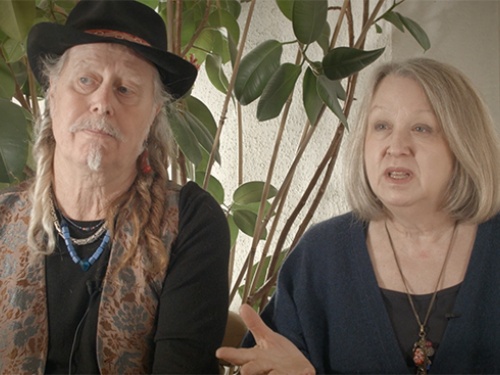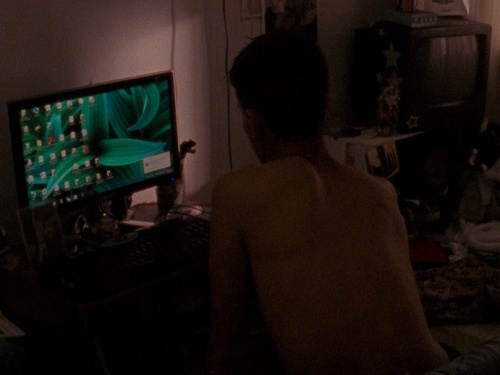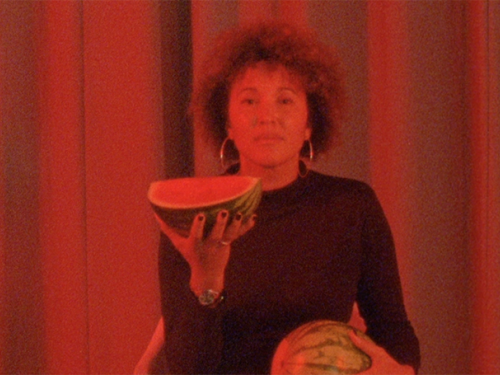The Past is Never Dead: An Interview with Joshua Oppenheimer
Ahead of our director Q&A and preview screening of The Look of Silence, a companion piece to award-winning documentary The Act of Killing, Maya Caspari spoke to Joshua Oppenheimer about the process of creating the films and the ethical need for empathy.
The Act of Killing and The Look of Silence feel quite different, in terms of the stories they focus on and the way they are visually constructed. How do you see the relationship between them?
The two films complete one another and form a single work. They are about two fundamentally different, but complementary, aspects of impunity today. Neither is about what happened in 1965 - neither is a historical documentary. Both are about what happens when there’s genocide and the perpetrators remain in power, when there’s no truth, reconciliation or justice.
The Act of Killing deals with the lies the perpetrators tell themselves to live with themselves, and the terrible effects of those lies when imposed upon a whole society – in that sense it’s a flamboyant fever dream of a film, because it is a film about escapism and guilt, particularly in the uncut version that the ICA showed for a year. The Look of Silence is about what it does to human beings to have to live afraid for half a century, for their whole lives. It is also about the perpetrators, but about the perpetrators as they are experienced by the survivors who have to live surrounded by them, with the fear that this kind of thing could happen again at any time.
As someone so conscious of the ways in which we construct and shape reality through narrative, what were your aims when you were editing the films, in terms of the narratives that you yourself wanted to create? I was struck by the juxtaposition of the very intimate shots of Adi's father and the perpetrator's memories of their actions in The Look of Silence for example.
When you edit a film, you’re working from your stomach, from your fingers and your eyes and your ears – all five senses. The Look of Silence was conceived—though it’s highly dramatic because of the tense confrontations between Adi and the men who killed his brother—as a journey where we see this pain haunting more and more intimate spaces: a daughter’s relationship with her father, a whole family.
Even more than this trajectory from the political to the intimate, the film is constructed as a poem composed in memoriam, a backward-looking poem, not just to the dead who can never be wakened but to the victims of the genocide that continues today because the perpetrators remain in power. It is a poem composed in memoriam to the lives destroyed by fear that can never be made whole again.
I understood that Adi sought some kind of reconciliation with his neighbours, but I told him that I thought I would be filming the failure of these attempts. And he would leave every confrontation with the perpetrators utterly deflated and sad. Yet I told him, if I can show the complex, delicate, rich reactions from the human beings he was confronting, that we can perhaps show the abyss of fear, guilt and—for the perpetrators—fear of their own guilt, that divides Indonesians from each other, neighbours from neighbours, relatives from relatives and people from their own pasts, their own selves.
If we can show that, then we can show how torn the society is and make visible the prison of fear in which every Indonesian experiences. We can inspire younger Indonesians to say: "Wait, I don’t want to raise my children afraid." In that way, through the film, we can succeed in a much bigger way than we ever could have in the individual confrontations.
It’s a provocation, a mirror in which Indonesians above all—but everybody who sees the film—recognises themselves and sees that we cannot run away from our own pasts. William Faulkner put this beautifully when he said: "The past is never dead. It is not even past."
You have spoken about the ethical importance of generating empathy with the perpetrators. How do you balance this with the need for critical distance, the need to avoid becoming too implicated in their stories?
To not create empathy is to implicate yourself. If you don’t empathise, you’re lying to yourself, saying "I have nothing to do with these people." That is denying our responsibility as human beings, and my responsibility as a filmmaker, to try to understand. I’m not suggesting that the audience or I should sympathise or excuse. We should empathise because otherwise we are guilty of escapism. We are making it impossible to understand how human beings kill. If we fail to understand that, we have no chance of preventing it or changing it. We condemn ourselves to a perpetual Manichean struggle between the good and the bad.
Why did you choose to draw attention to your own presence in the films?
For the most part, I think I minimise myself in the films. In The Act of Killing the audience should imagine through my closeness to Anwar, they should become close to Anwar, they should empathise with Anwar, not with me. In The Look of Silence similarly they should feel close to Adi more than to me.
Yet the reason those interventions play a very important role is that the central dramatic arc in both films is the filmmaking process. As a filmmaker, I’m not documenting a pre-existing world; I’m taking a journey with my participants that is hopefully insightful, that leads us to confront some of the most painful aspects of our reality, and, in the end, leads us to a place which is completely different from where we began. That’s not something I hide from the viewer. The filmmaking process is the journey and is the dramatic arc. In that sense, The Look of Silence is a film about cinema as much as it is a film about Adi’s village and his life. All of the confrontations and all of the scenes that take place in the film, take place for the film.
Did you change through the process?
Certainly. From Adi and the process, I’ve learnt the value of empathy and that the human capacity for evil depends on our ability to lie to ourselves. I’ve learnt that we cannot run away from our pasts - we are our pasts. I’ve learnt that there’s no fear more crippling than the fear of looking, and, if you can overcome that, instead of being haunted, you’ll be stronger. ■
The Look of Silence is at the ICA Cinema from 12 June.
There will be a double bill screening of both films on 20 and 21 June.
This article is posted in: Blog, Film, Interviews
Tagged with: Joshua Oppenheimer, The Act of Killing, The Look of Silence, Indonesia, Trauma, Film, Documentary Film, Documentary, interview, Maya Caspari









